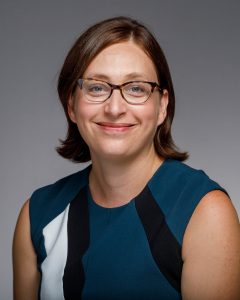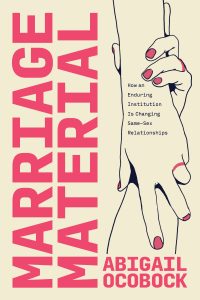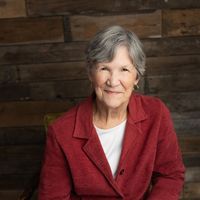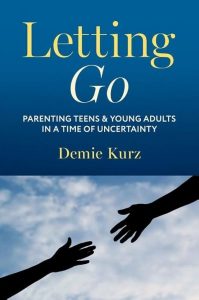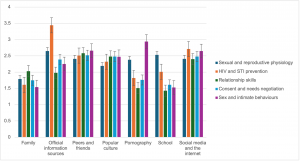Reprinted with permission from Newsweek
President Donald Trump has begun his rampage on reproductive rights, and it’s as bad as we expected. Not content with the usual script for every GOP administration coming into power since 1984, of halting US aid to groups providing or even discussing abortion, Trump’s move is true to his brand of mean-spirited, punitive retribution against the most vulnerable. His version of the directive stops the flow of funds not just to organizations providing family planning assistance, but to those offering a wide range of health services—with dire consequences for people across the world seeking not only contraception and abortion, but HIV treatment, child nutrition, and treatment for malaria and tuberculosis.
A 2019 analysis has shown that GOP-led funding cuts have actually had the effect of increasing abortions by 40 percent. That’s a clear sign, if we needed one, that the policy is not about protecting unborn lives but about punishing women. And though the Trump directive has occasioned rightful ire from reproductive rights advocates and others on the liberal end of the political spectrum, on one level the distinction between Trump’s move and increasingly prevalent liberal arguments for increased birth rates is one of degree, not kind.
On this level, the Trump eructation of hateful decrees designed to reduce women to their reproductive capacity is merely the logical extension of the belief, widely accepted all along the political spectrum, that making babies is a social good in itself. This pronatalist worldview is so prevalent on the right and the left and the center; in countries the world over; in religions and families and songs and stories; in the redemption arcs of sitcom heroines; and in the doctor’s offices that deny young women elective sterilization but never question a decision to carry a pregnancy to term, that it has a profound effect on narrowing the spectrum of reproductive choices that people feel are available to them.

In Iran, once a leader in family planning, recent legislation has restricted access to abortion and contraception, required programming in state-run media that promotes childbearing and denounces single, childfree, and small-family choices, and required removal of educational content deemed to discourage childbearing at Iranian universities. Russia has signed into law a ban on “childfree propaganda,” which bans any person or organization from promoting the childfree lifestyle or encouraging people, either in person or online, not to have children. Leaders of two South Indian states have called for women to have more children, in a transparent bid to increase funding allocation for their states.
These efforts are all just desperate attempts by world leaders to bolster their own economic and political power by controlling women’s reproduction. They compound pronatalist pressures felt in the home, as in low-income countries where many women must use contraception without the knowledge of their husbands to avoid divorce or domestic violence.
It is in these countries where women endure the most oppressive pronatalist and patriarchal environments that Trump’s gag rule will hit hardest. Previous iterations of the rule saw disrupted contraception and abortion from Kenya to Nepal, with emboldened conservative Christian organizations launching highly visible anti-abortion campaigns and targeting women and health care workers with intimidation and harassment.
The truth is that the liberal tendency to view Trump’s pronatalist overreach as some unprecedented aberration is unfounded. Trump’s extension of the global gag rule, horrifying as it is, is along a continuum of policies and cultural norms that have defined and limited women’s lives at every level, for millennia. Even progressive policies implemented with the goal of increasing birth rates feed into the time-honored but outdated cultural institution of pronatalism, as they view women not as human beings with the absolute right to make their own reproductive choices, but as tools to achieve economic growth or political power.
To be sure, a safety net that ensures quality of life for all citizens—particularly children and the most vulnerable—should be a baseline provision of the social contract. But we should be skeptical of any government that adopts these measures with pronatalist intentions and not simply because they are the right thing to do. As the experience of Finland demonstrates, even the most generous such policies are unlikely to raise birth rates. In countries all over the world, once women experience the freedom and financial benefits of having fewer children, they are not turning back.
This is why fighting the egregious assaults on reproductive rights by Trump 2.0 is not enough. These assaults are enabled by a cultural landscape that normalizes the notion that women’s purpose is to breed children and assumes that high birth rates would emerge as women’s “natural” choice if only conditions were supportive. When we are told, for example, that American women state in surveys that they have fewer children than their ideal number, we should consider the centuries of pronatalist conditioning that have shaped that “ideal.”
And we should be fighting not only the global gag rule, but the global institutions and cultural norms that pressure women to have children for any reason and interfere with their right to choose any number of children or none at all. At a time when multiple cascading ecological crises, escalating global military conflict, and worsening levels of wealth inequality and poverty threaten our species and others across the globe, we should be embracing global women’s turn toward smaller family and childfree choices, and doing everything possible to ensure that these choices are celebrated and protected.
Kirsten Stade is a conservation biologist and communications manager of the NGO Population Balance. She has worked for more than two decades for nonprofits fighting extractive industries on public lands, safeguarding the integrity of regulatory science, and challenging growth-biased media narratives and political institutions. You can learn more about her here https://www.populationbalance.org/

